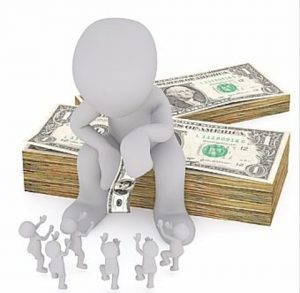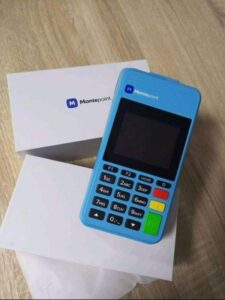If you are looking for how to trade boom and crash indices successfully, then this article was written for you. As a rule of thumb, there is no strategy that is 100% perfect, but I will try to share some tips that will guide you in your journey to become a successful trader.
What is Boom 300 and Crash 300 Indices?
If you are a newbie, you must have heard of Boom 500, Boom 1000, Crash 1000, and Crash 500. For the sake of clarity, Boom and Crash are ‘synthetic indices ‘ that is found only under the Deriv.com (a binary.com brand) platform.
With Crash 1000(500) Index, there’s an average drop in the price series that occurs at anytime within 1000(500) ticks.
With Boom 1000 (500) index, there’s an average of one spike in the price series that occurs at anytime within 1000(500) ticks.
How to Trade Boom and Crash Indices Successfully
A number of traders (both expert and beginner) have had issues with the market structure of boom and crash. This is because, unlike the currency pair, boom and crash have been structured to either buy or sell using spikes at an even period of tick.
For instance, when trading either the boom (Boom 500 or Boom 1000) or crash (Crash 500 or 1000) assets, one will observe that the boom market sells by default while the crash assets buy by default. However, when boom markets buy, it buys with long bullish spikes while crash markets sell with long bearish spikes. This characteristic feature makes the boom and crash unique but, also scary for beginner traders.
Develop a Strategy
Like in every forex market, different trading strategies are employed by traders to make profits. This includes scalping, day trading, swing trading, and position trading. As a trader opts for a particular type of trading strategy, foundational factors influencing such a choice include a person’s trading style, trading psychology, exposure, and experience. All these foundational factors anchor on two basic characteristics: Personality and Knowledge.
Trading Boom and Crash, My Story
When I began trading boom and crash markets, I began my trading adventure as a scalper. In fact, in the first year of my trading experience, more than 95% of boom and crash traders that I have been privileged to meet were scalpers. As much as I knew that there were other trading strategies, scalping was the basic trading strategy I felt was suitable for trading boom and crash markets.
This was further confirmed by the way the market was structured (spikes in boom buy and crash sell situations), and also on the low risk to reward ratio when day or swing trading with very small lot sizes. For instance, in currency pair trade, using a lot size of 0.01 for a $100 account is a good risk management decision.
However, trading boom and crash with a lot size of 0.01 is a difficult adventure that will demand more than 100 pips before a trader gets a profit of $1. For that reason, Deriv.com upgraded the lowest lot size of the market from 0.10 to 0.20 to enable profit maximation. In as much as I know that it is a suicidal adventure to trade a 0.20 lot on a $100 account, the market structure is the basic platform for which the default lot was set to 0.20 to enable traders to have a return of $1 for every 5 pips and vice versa.
Generally, scalping the Boom and Crash market tends to be the norm due to the market structure and psychology. For that reason, many traders tend to focus on just lower time frames; precisely, M1 to M15. This rather makes it difficult to convince traders to look away from the spikes (which are so obvious and influencing in lower time frames) and put their focus on the general big picture of the market (the market trend).
However, the boom and crash market can still be ‘day or swing traded‘ if a trader has a good knowledge of the market psychology, price action, and good risk management. In fact, the best way to make profit lies in day trading or swing trading. This is because either of these trading strategies always respect the price action. Figure 5 to 7 shows the price action chart as observed in Crash and Boom markets.
The aim of trading is not just in making profits but also in the personal development of one’s skill. Hence, as one sets out as a scalper, one should also endeavor to be part of the market’s big picture by improving to a day, swing, and position trading
How to Win in in the Crash 300 and Boom 300 Market.
If you are currently struggling in the market, please don’t give up. I blow my account more than 3 times before I finally understand how the market works. Here is what you should learn from me:
1. Price Action is very Important.
I don’t know how to put this, but from now on before taking any trade, try and study the market structure. If you understand the market structure, your success level will increase by 90%. Understanding the Market structure involves identifying price patterns, Candlestick Movement pattern, support and resistance, trend and momentum, Order block then support and demand level – which leaves an important trail on the chart.
If you want to fully understand how to trade crash and boom indices successful, First, mark out all the higher high and Higher lows in the chart; study price action reaction at those point; (you can include a trend indicator e.g., moving average like EMA 200 or Bollinger band (default setting); analyze and trade with proper risk management.
For EMA 200, when price is above the EMA, the trend is up, when the price is below the EMA, the trend is down, in this situation, look for the nearest Double Bottom (to buy) or Double top (to sell).
For Bollinger Band, look for Buy Entry when the price touches the lower Bollinger band and a sell entry when the price touch the upper Bollinger band
2. Beware of Stop Loss hunt
When I started trading Boom and Crash newly, I was a victim of stop loss hunt. If I enter a sell trade on Crash 300 for instance at a double top, the market will push pass that point and I will be force to close in red, but after some minutes the market will reverse back to my entry point before deciding on the next direction. After understanding Stop loss hunt, I began to trade with patience especially when I have clearly study and understand the market structure.
3. Risk Management is Very Important
Know when to close a trade in blue or in red; This is a problem many newbie face; even as an experience and a profitable trader, I still close some trades in red; this is because sometimes, breakout can happen, and once you notice this especially from candlestick formation, minimize your loss and look for the next entry point.
4. Develop a target based trading strategy.
One of the ways you can learn how to trade Crash and Boom and be successful is to develop a strategy that is target based. By Target based, I mean a Smart Money Concept kind of trading – Having a daily profit target, risk to reward ratio and growing your account to withdraw not for continuous deposit. Your strategy should include lot size, conditions for entering a trade, condition for exiting a trade and how to recover when you close in red.
5. Practice and Patience is Key.
Before trading on your real account, practice first in your demo. I study all my strategy first on my demo account at least one full week, monitor the result before trading on my real account.
6. Take Trading as your business.
Trade as if you are investing to make gain, not gambling; because jumping in to get few pips for quick profit can land you in red. Trade only based on Market structure, and your strategy.











